"It seems like once people grow up, they have no idea what's cool." -Bill Watterson
Well, at least we can all agree on what's not cool. The Sun.
With a surface temperature of around 6,000 Kelvins, the Sun is one of the hottest objects that we're all familiar with.
But when it comes to stars, the Sun is merely a "G-type" star. It turns out that there are many types of stars that are -- typically -- more massive, bluer, and hotter than our Sun.
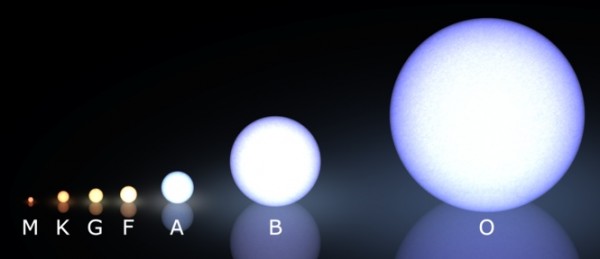
In fact, O-stars, the hottest type, can have surface temperatures over 40,000 Kelvin, hot enough that they would be classified as "Ultraviolet stars," if only our eyes could see light that energetic.
But going down in temperature, we find that smaller, less massive stars burn at lower temperatures. Once you get down to below about 40% of the mass of the Sun, you go down to being a red-colored M-star, with a temperature of only around 3,000 Kelvins.
M-stars still burn hydrogen into helium, like our Sun does, but don't have enough mass to burn anything past that, and will die with the weakest of whimpers, simply contracting and fading away.
But even M-stars need to have at least 7 to 8% of the Sun's mass in order to be able to make helium in their cores. What happens if you're less massive than that? Well, we do observe stars even cooler than M-stars, but we've had to look very hard to find them.
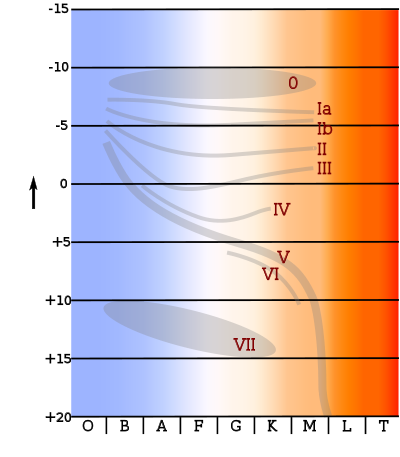
Dropping dramatically in temperature and brightness, we come to the newest class of stars: brown dwarfs. (That's dwarfs, not dwarves.) These stars, of spectral type L, T, and (theoretically, thus far) Y, are too small to burn hydrogen into helium. The brighter brown dwarfs can form deuterium, the lightest stable isotope of hydrogen, but the dimmest ones can't even do that.
Still, there's a fine line somewhere in between a large planet like Jupiter and a Y-type brown dwarf. And we are starting to figure out just what's in that grey area.
The lowest temperature brown dwarfs that we've discovered out there are right around 500 to 550 Kelvin, like this guy, which makes them much colder than Venus, and barely warmer, on average, than the planet Mercury.
That's right. We've discovered stars that are cooler than some of our planets.
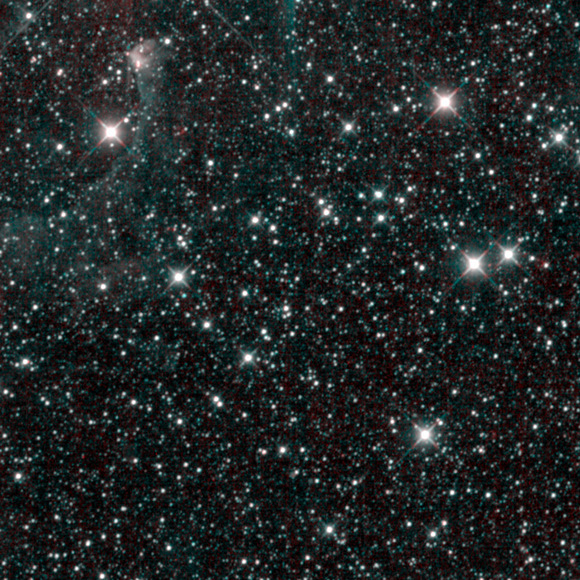
The WISE spacecraft, which took the picture above as its final image, may break this record and discover the first Y-type brown dwarf when its data is completely analyzed. How would this happen?
All stars made out of atoms that have run out of fuel: Y-type brown dwarfs, stellar corpses (like white dwarfs), etc., contract under their own gravity, and that's the source of their energy. Although it will take at least hundreds of trillions of years (which is many times the age of the Universe), eventually these stars will shrink to a minimum, most stable configuration. At that point, there will be no energy left to release, and these stars will become black dwarfs, huge clumps of matter with a temperature approaching absolute zero!
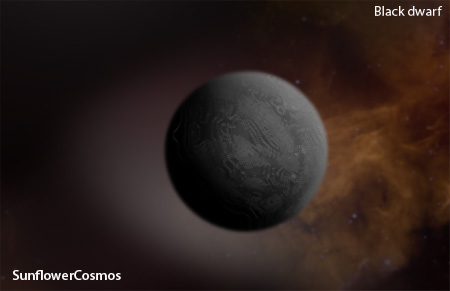
So come back again when WISE releases their data, because we just might have a new record-holder!
- Log in to post comments

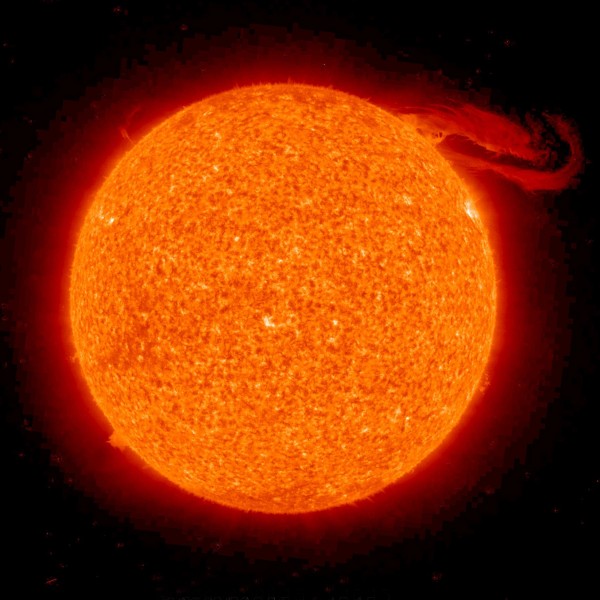



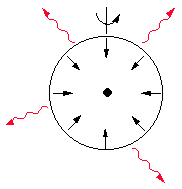
This
absolutely boggles me. Were these predicted before they were discovered?
I'm having a very difficult time wrapping my head around this. Thanks for blowing my mind this evening!
So there is a chance that some of these might be below 373K ? There would be a lot of material in a new kind of habitable zone then...
Why call them "stars" if they don't fuse?
Wikipedia indicates that brown dwarfs are essentially stellar objects massive enough to fuse deuterium. Whether they actually do depends on local conditions, and if they do they use up all their fuel relatively quickly since deuterium is scarce.
Black dwarf: huge clumps of matter with a temperature approaching absolute zero!
So you're saying the Universe threw some dirty snowballs into the mix, eh. I should have expected as much from a physics prof in Portland...at least its not yellow snow.
Truly excellent as always, Ethan. Thanks!
I've never heard of these as a possible explanation for dark matter. Probably a stupid question, but why is that?
Well the more massive ones can also fuse lithium, and brown dwarfs above 13 Jupiter masses or so can fuse deuterium. Since there is evidence that the brown dwarf formation process does produce objects below 13 Jupiter masses, there are some brown dwarfs that never do any core fusion reactions. (There is also evidence that the planet-formation process can produce objects above the deuterium-fusion limit so there are also some planets out there that host fusion reactions in their interior, IAU definitions of "planet" notwithstanding.)
So now I'm confused. If a star can be colder than Venus, then what's making Venus a planet and the star a star?
What about pygmies and dwarfs???
Classes L, T, and Y? What happened to R/N/S? And why wasn't I notified?
@Max; brown dwarfs in galaxies' extended haloes (massive, compact halo objects, or MACHOs) were a suggested form of dark matter. However, it should be possible to identify them by their mass, as they gravitationally lens background stars. Searches for such objects have not turned up enough to explain dark matter.
Also, the ratios of helium, deuterium, lithium etc. observed in stars constrain the amount of normal matter present in the early universe (when some of the universe's hydrogen was fused into helium). These Big Bang nucleosynthesis results show that whatever dark matter is, it's not made up of protons and neutrons like we are.
conf asked, "So now I'm confused. If a star can be colder than Venus, then what's making Venus a planet and the star a star?"
My take on this is that the difference between a star and a planet is whether internal fusion reactions generate heat.
Venus is rocky and, because its atmosphere traps the sun's heat, hot: 460 °C. Mercury is closer to the sun and receives four times the amount of sunlight but only heats up to 420 °C. But both planets are heated by the sun.
Jupiter is mostly gas. It is shrinking under its own gravity and is thus heating up, but is still pretty cold.
These very cold stars do host fusion reactions but at a very slow rate, so they don't get very hot.
(BTW, the Earth's interior is hotter than it would otherwise be because of ongoing nuclear fission reactions.)
I'd like to reiterate Nemo's question at #4. You say there's a "fine line" between a gas giant and an object that can't fuse its gases but is still a star. Exactly what properties lead to the difference in classification?
Benhead & Nemo,
That's kind of the interesting question. Nobody would call Jupiter a star, and its surface temperature (at the cloud-tops) is only around 130 Kelvins. But descend down about 10 Earth atmospheres, and it's room temperature. (300 Kelvins.) And head on down until you hit liquid, and it's about 10,000 Kelvin in there.
Start adding more mass than Jupiter has, and the size of your planet will actually begin decreasing, as gravitational contraction becomes more important. This contraction turns gravitational potential energy into light and heat, and (in extreme examples) is how white dwarf stars work, and also many brown dwarfs. So, you might think that's typically where we draw the line: if you're contracting gravitationally and emitting light and heat from it (Kelvin-Helmholtz contraction), you'd be a star. But Jupiter gets more energy from this contraction than it receives from the Sun!
I think what we're running into is that we're only now first able to find these very low mass ( < 70 Jupiter masses ) balls of gas, and they're not quite Jupiter-like planets, but they're not like the stars we know, either. I should have, perhaps, said there's a fuzzy line, because right now, we call it a planet if it orbits a star, and we call it a star if it's on its own!
I'm betting Jupiter is fusing very slowly, a virtual particle random lucky hit sort of reaction. Jove puts out a respectable bit of electromagnetic and infrared radiation. Now for you word parsers, in a binary system of two equal sized type Y's, what would each body be called?
If the distinction between a star and a planet is whether the object orbits a star, does that mean it's impossible (by definition) to have a binary star system where one member is a brown dwarf? It seems to me like we're getting another "Pluto is not a planet" situation.
The wiki page on our sun indicates that, while the surface temperature is 6,000 K, the temp in the corona is in the millions of degrees. Why is there such a huge difference there and why is the surface temp a good measure of how hot the sun is? Would brown dwarfs have a corona, and if so would that be way hotter than the surface (and venus)?
So in brown dwarfs most of the original material is unprocessed (by nuclear reactions) so hydrogen is still hydrogen?
What then happens when 2 or more brown or even black dwarfs coalesce? If the total mass is now above that required for ignition of hydrogen burning presumably it will occur and a 'new' star lights up.
It seems to me that this process would hugely extend the time for the final 'heat death' to occur, given that by the time the final candidates for this scenario acheive 'blackness' they would be separated by distances that I can't even begin to contemplate.
Could these be mined for hydrogen?
Your graphic of the Y type star shows bright white emission at the poles. What gives?
I've never heard of these as a possible explanation for dark matter
Bruce @19: The 6000 K temperature is at the photosphere, which is basically the last scattering surface for your average photon. There is gas above that point, but at a much lower density. Various processes involving plasma waves and contorted magnetic fields heat this gas and cause it to escape as the solar wind. Total heat content still decreases with altitude despite the increasing temperature, which is more than offset by the reduced density.
Similar processes are at work in Earth's upper atmosphere. Above the tropopause (about 17 km at the equator) temperatures start to increase due to heating by waves, friction (plasma against gas), and Joule heating (electric fields aligned with current flows due to plasma in the ionosphere). Typical temperatures in the Earth's magnetic tail are about an order of magnitude higher than the corona, but there is so little matter that the total heat content is effectively nil.
So, hypothetically, with a Black Dwarf (if we ever found one completely 'dead' or stable): if it was orbiting another star that would heat it a bit above absolute zero, could we land on it?
By that I mean what would the physics be there? Would it be solid, or would it be a bit more dense then Jupiter, but still a gas? I just think it would be neat to land on a star, even if it was thousands/millions/billions of years away (if at all), it's still a cool (see what I did there?) notion.
Eric @24
Thanks for the explanation. It kind of makes sense. Does that mean that we should be looking at heat content (density?) at the last scattering surface when comparing suns / planets? How would the sun, a brown dwarf and Venus compare on that measure? Is temperature for those three still a good proxy. I would guess not.
Hi my name is Angelo and i have a question about stars.What happens to a star when its temperature increases,what happens to the stars energy output? And what happens to wavelenght.... does it increase, or decrease and how long? -Angelo Moreno
I suppose that a black dwarf would by definition and properties have at least a liquid surface of helium. Its the only thing I can think of that is liquid at close to 'absolute' zero. I am assuming that everything else in the dwarf would have a greater density and therefore sink below the Helium ocean. Makes you wonder if it was part of a binary if there could be a situation where the partner suplied enough energy/light to be a source for life supporting reactions. Not so much little green men, more little green postage stamps.
No black dwarfs are thought to exist in our universe yet, it is still too young.
beg wurds hurtin heed....muzt gow liy downn 4 resst off dae..
What makes me scratch my head is if these black dwarfs have the same gravitational force that white dwarfs have. That means, a tablespoon of matter of that black swarf would equal the amount of mass of mount everest! Am I correct?